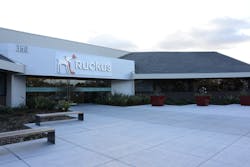With seemingly everyone constantly connected to some kind of device, Wi-Fi networks are becoming increasingly strained. With next-generation heterogeneous networks slated to rely more heavily on Wi-Fi, however, it is becoming crucial to expand Wi-Fi capacity and coverage. Salvation could come through the combination of Terrestrial Low Power Service (TLPS) and Smart Wi-Fi.
The new TLPS from Globalstar is an IEEE 802.11-based service in the 2.4-GHz band. Itenables a privately managed extension to the 2.4-GHz Wi-Fi band using adjacent licensed spectrum. The goal of this service is to provide carrier-grade access points and substantial Wi-Fi offload capacity.
Ruckus Wireless and Globalstar have completed the first round of Wi-Fi testing on unlicensed spectrum in the Industrial, Scientific, and Medical (ISM) band and Globalstar’s licensed Mobile Satellite Services (MSS) spectrum. All tests were performed within the 2.4-GHz band using Ruckus’ Smart Wi-Fi equipment and existing smartphones. Results showed increases ranging to 5X in distance 4X in capacity over traditional Wi-Fi networks with no impact on existing networks.
The Federal Communications Commission (FCC) is currently freeing up more of the satellite spectrum for terrestrial mobile-broadband services. This move is happening in accordance with the goals of the National Broadband Plan, which is tasked with alleviating the congestion of wireless networks as more Wi-Fi-enabled devices flood the market.
About the Author
Iliza Sokol
Associate Digital Editor
Iliza joined the Penton Media group in 2013 after graduating from the Fashion Institute of Technology with a BS in Advertising and Marketing Communications. Prior to joining the staff, she worked at NYLON Magazine and a ghostwriting firm based in New York.
